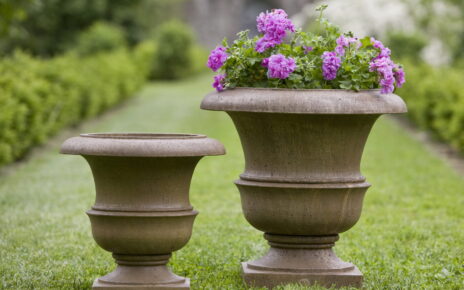Have you ever looked at a well-designed outdoor space and wondered about the seemingly simple but significant elements that contribute to its overall aesthetics? Yes, one of the key components that add character to any landscape is the retaining wall. In this post, we’re diving deep into the world of retaining walls, more specifically, the materials used in their construction.
Retaining walls are utilitarian by nature, but that does not mean they cannot be attractive. Interlaced with the right materials, retaining walls can become an essential design element, adding a touch of sophistication to your garden or yard. So, what materials are best suited for constructing a retaining wall? And how can these different materials bring unique aesthetic values?
In this comprehensive guide, we’ll unwrap the answers to these questions and more. Taking you on a journey through the different types of materials used for retaining walls – timber, concrete, natural stone, and brick, we will explore their diverse applications, pros, and cons.
Timber Retaining Walls: Pros, Cons, and Applications
While many materials can be used for constructing retaining walls, timber has its unique charm. It lends a warm, rustic appeal to your outdoors which is hard to replicate. But is timber the right material for your retaining wall?
Timber is undoubtedly a versatile material. It’s easy to work with and gives you the freedom to create curves and contours in your design, offering some malleability that other materials can’t. Moreover, timber is a relatively affordable option, particularly when compared to stone or concrete. If you’re looking for a cost-effective choice that doesn’t compromise on aesthetics, a timber retaining wall might be the perfect fit.
However, timber does come with a certain lifespan, and maintenance can be higher compared to other materials. Regular sealing is required to protect the wood from rot, insects, and weather damage. Though treated lumber can enhance durability, a timber retaining wall may not be the best choice if you’re after longevity.
Concrete Retaining Walls: Pros, Cons, and Applications
If you’re seeking durability, a concrete retaining wall might be the answer. Concrete, while perhaps less easily associated with charm and character, brings with it strength and resistance like no other material. So, what are the pros and cons of concrete retaining walls?
Concrete walls are renowned for their strength. They are highly durable and can withstand the pressures of the elements over extended periods. Concrete is also relatively easy to maintain, needing only occasional cleaning. In terms of design, precast concrete offers a range of finishes allowing some room for creativity.
However, on the downside, concrete walls can often feel sterile and uninviting. They lack the natural warmth of materials like timber or stone. While finishes can alter its appearance, it still may not create the same inviting feel. It’s also worth noting that concrete can be expensive and challenging to install, often requiring professional help.
Natural Stone Retaining Walls: Pros, Cons, and Applications
Natural stone is perhaps the oldest material used for building retaining walls. With a variety of stones like granite, sandstone, and limestone at disposal, it offers a unique, elegant appeal. But, how does it perform as a construction material for retaining walls?
Natural stone walls give you a highly adaptable and authentic design. Each stone is unique in size, color, and texture, creating a one-of-a-kind pattern within your wall. Stone walls are also remarkably resilient and can stand the test of time with little maintenance.
However, while stone walls are undeniably beautiful, they are also among the most expensive options for retaining walls. Building a stone wall takes a lot of time and effort, often requiring professional assistance. If you’re on a tight budget or in a hurry to complete your project, a stone retaining wall may not be the most favorable choice.
Brick Retaining Walls: Pros, Cons, and Applications
Brick retaining walls offer a traditional look that is ideal for homes with an older architectural style. Brick, as a time-tested material, brings its unique allure. But how does it measure in practical aspects?
Brick retaining walls are sturdy and require minimal maintenance. They withstand all types of weather, and their warm, red tone can add a rustic charm to any garden or yard. Bricks also allow flexible design choices, with possibilities for different patterns and styles.
However, like stone, brick is an expensive option, and construction can be time-consuming. Bricks need to be laid carefully for stability, and proper drainage systems should be in place to prevent water damage. Despite these challenges, a well-built brick wall can last for decades and add substantial value to your property.
CONCLUSION
Choosing the right material for your retaining wall is a significant decision that will impact your landscape’s aesthetics, durability, and maintenance. Each material- timber, concrete, natural stone, or brick- brings distinct attributes to the table- a unique blend of beauty, strength, and resilience.
It ultimately boils down to personal choice, local climate, intended use, and, of course, budget constraints. Are you drawn to the rustic appeal of timber, the resilience of concrete, the timeless elegance of natural stone, or the classic charm of bricks?
Remember, this decision is not just about functionality and durability; it’s also about creating a visual delight that complements your home’s architectural style and your landscape’s overall look. Research well, ask for professional opinions if needed, and make an informed choice you’ll love not only today but years from now.
From keeping embankments in check to carving out terraced gardens, the humble retaining wall wears many hats. In choosing its material, you have the opportunity to infuse design, aesthetics, and personal style into that utilitarian function. So, don’t rush the decision. Explore your options, consider your garden’s design as a whole, and select a retaining wall material that completes your perfect outdoor picture.




